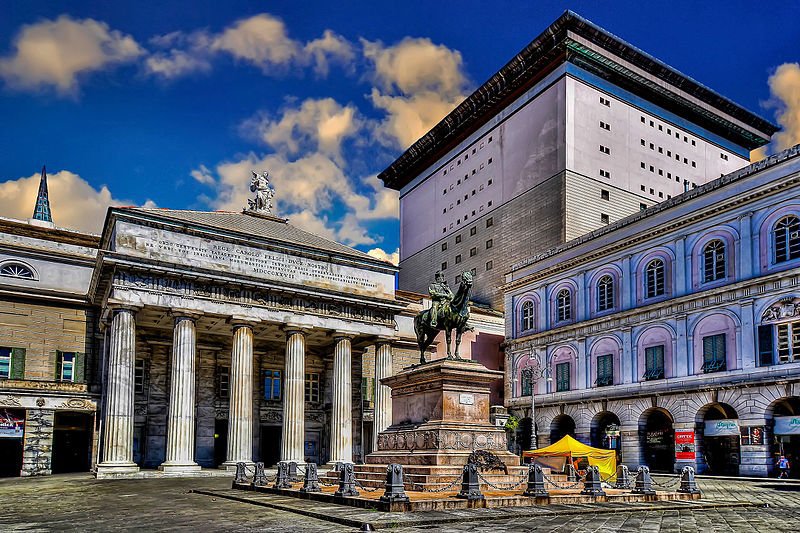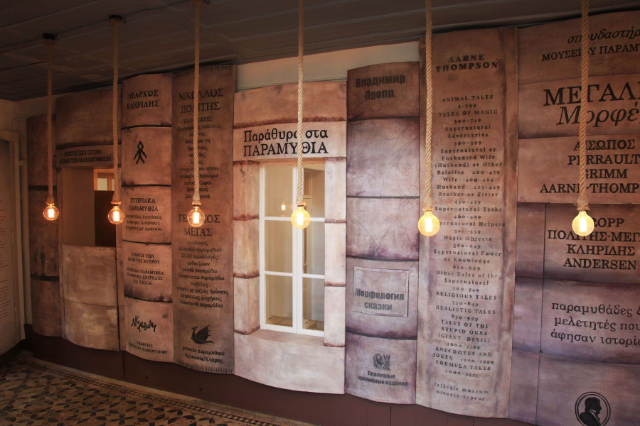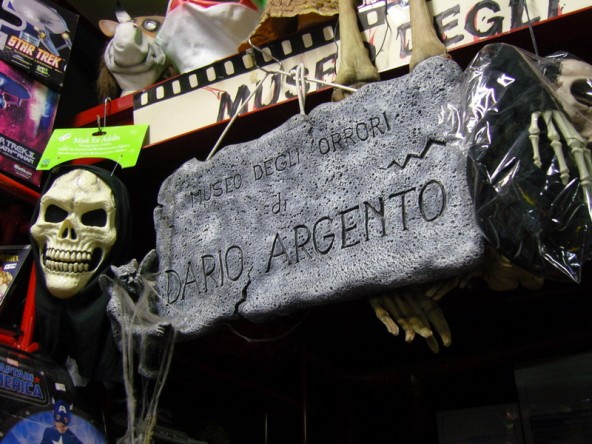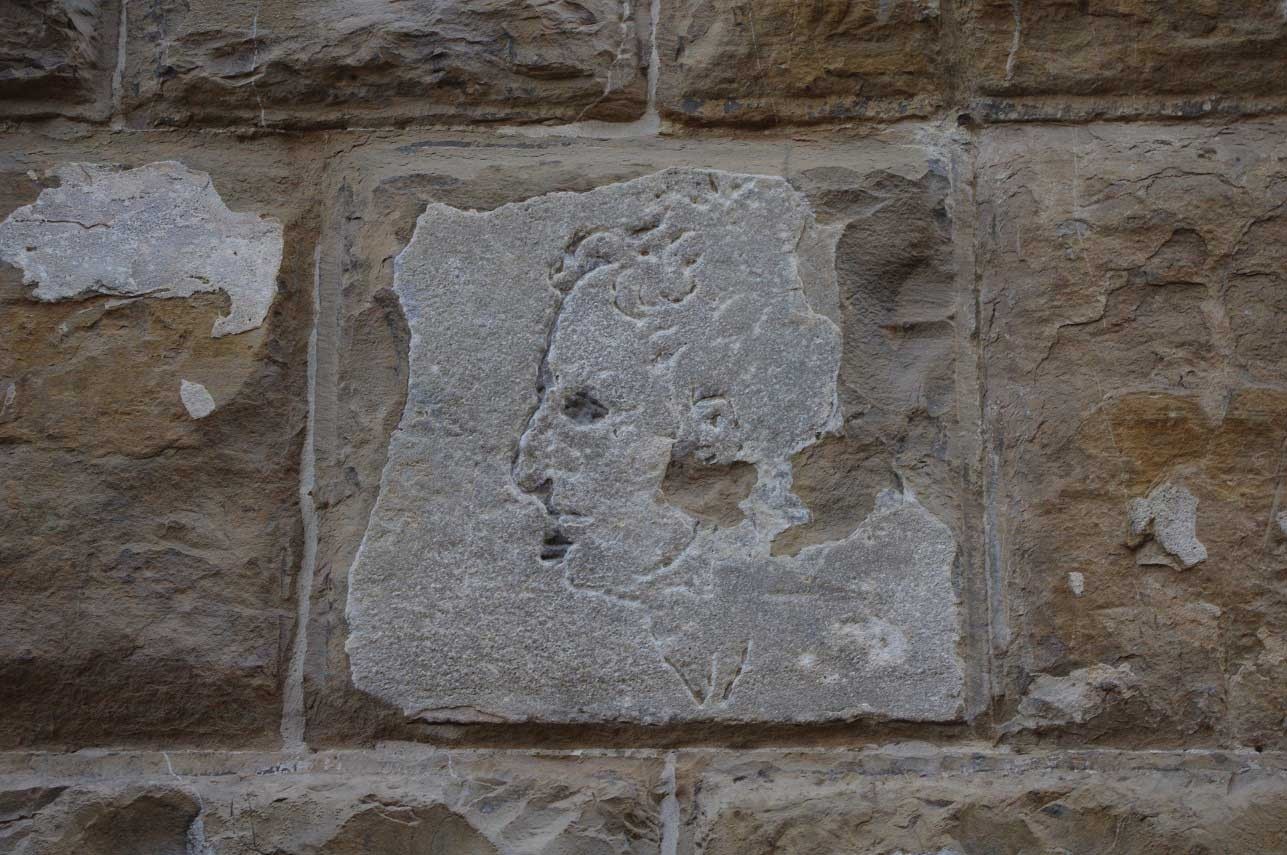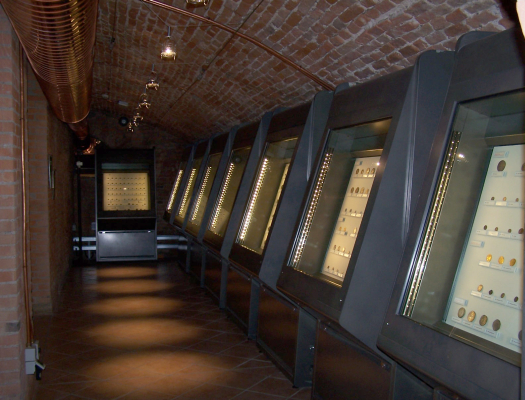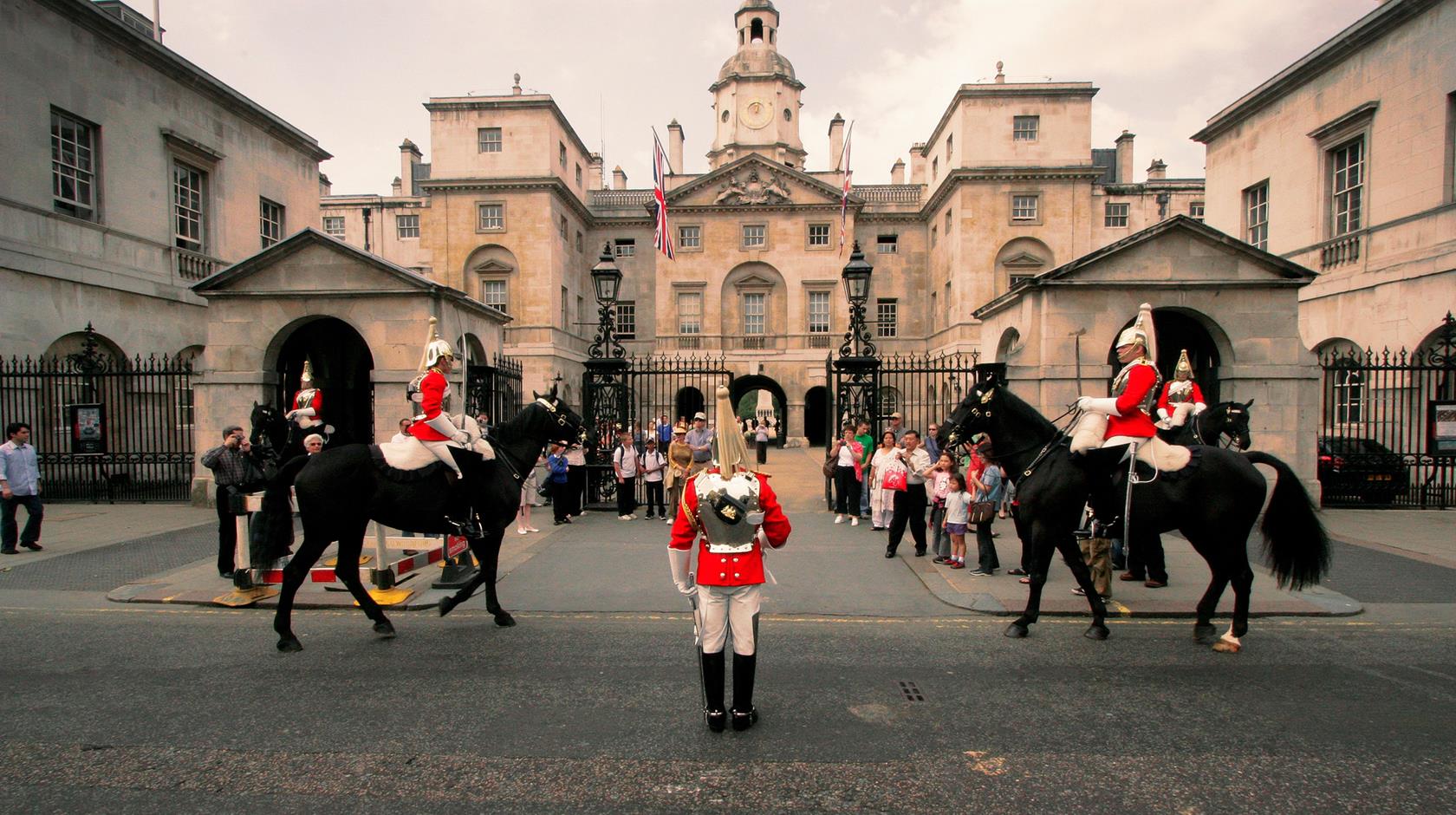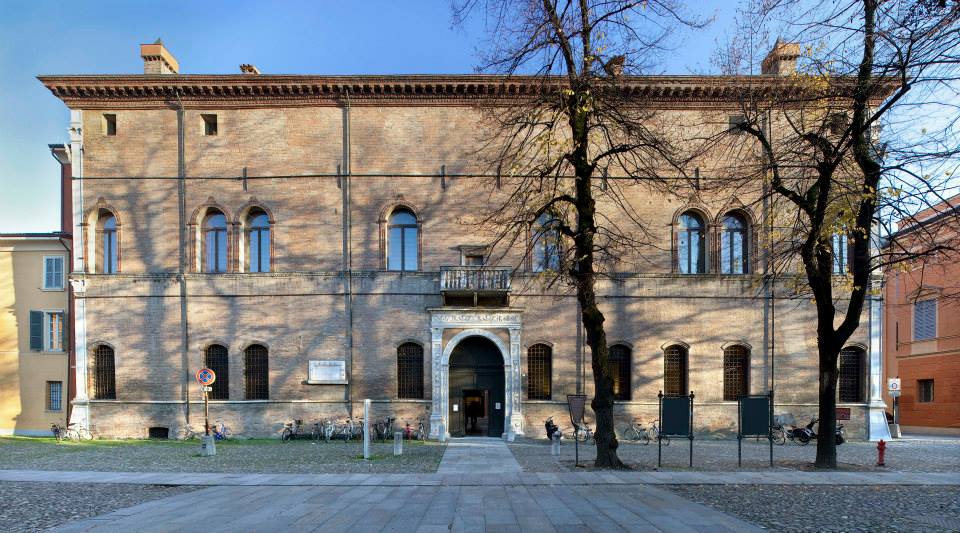Built on the area of the old Carlo Felice, the new theatre, designed by Aldo Rossi, recovers an idea already present in the projects of Paolo Chessa and Carlo Scarpa: the creation of a covered square of 400 square metres, where the theatre would be the ideal link between Galleria Mazzini and Piazza De Ferrari.
The square is an open-air foyer; the walls are covered with stone slabs and enriched by metal columns and beams.
The architects had two requirements in mind when building the new theatre: firstly, the need to rebuild it exactly where it was and secondly, the desire to equip the new structure with the most advanced technology. From this last necessity comes the imposing scenic tower, about 63 metres high.
Of the old Carlo Felice, built by Barabino, remain the columns, the pronaos, the Latin inscription and the terrace overlooking via XXV Aprile, which can be accessed from one of the foyers. The present structure is very compact and geometric, the scenic tower is a parallelepiped developed in height very linear, adorned only by a cornice. The stalls, the foyers and the services for the public are contained in a smaller parallelepiped, on which the pronaos and the portico stand out.
Stone, plaster and iron were used for the exteriors, marble and wood for the interiors. These are durable materials that suggest an image of eternity, safety and survival of the building over time.
From the covered square, going down a staircase, you enter a hall with a capacity of about 200 seats. Equipped with a small stage and independent from the rest of the theatre, the hall hosts conventions, conferences and musical meetings.
From the entrance of the theatre, a wide staircase leads to the cloakrooms and, going up again, to the first foyer, which has a surface of 660 square metres and is enriched by frescoes and tapestries.
A characteristic element of the new Carlo Felice is the lantern that can be seen in the foyer above the entrance; it is a sort of luminous cone that runs through the entire height of the building and crosses all the floors, bringing light from the roof to the covered square.
Absolutely unique is the scenario in which the technical units operate; just in the scenic tower, which houses the machine to move the shows, human work and sophisticated gears merge in a delicate balance. The theatre in fact has four stages, a main stage, a back stage behind the first one and two lower stages aligned with each other and managed by integrated and computerized electronic systems.
These stage handling systems, computerized lights, sophisticated control booths for filming and one of the best acoustics in Italy are among the features that make the Carlo Felice one of the most important emotion factories in Italy.
